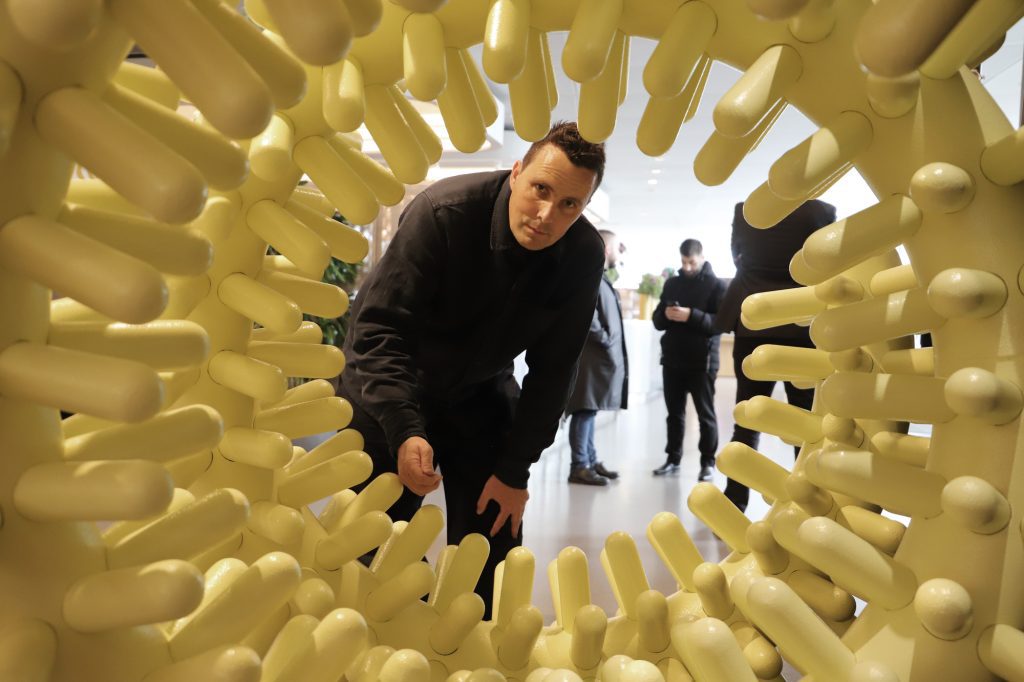
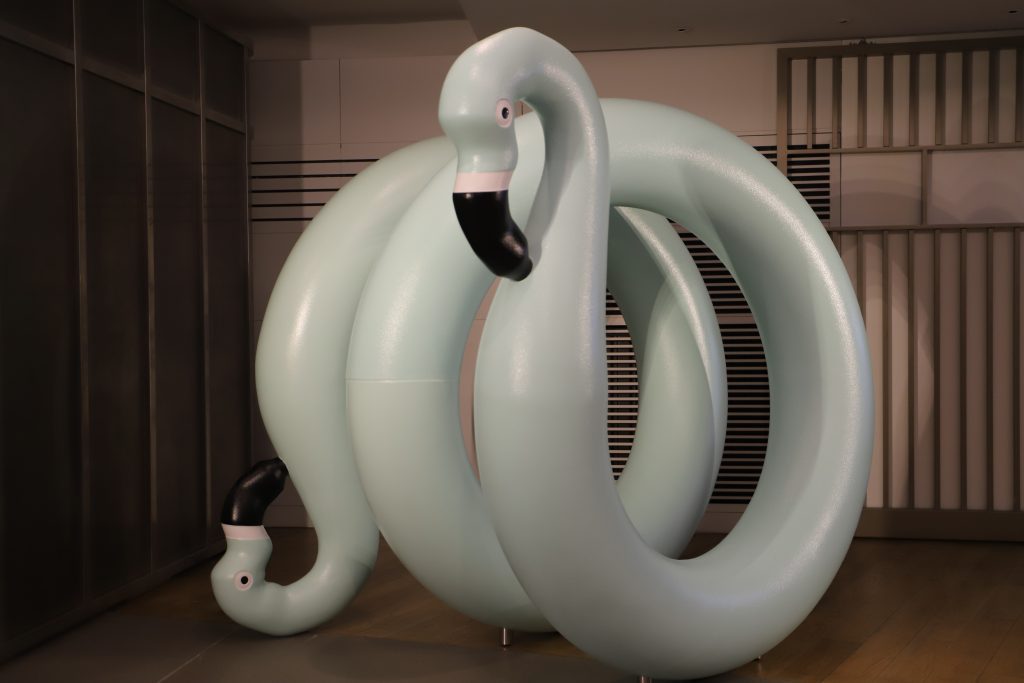
The Positive Spirale at Pullman Hotel, 2023
Cyril Lancelin is pushing the limits of creativity by blending architectural design with digital technologies, creating immersive experiences that challenge traditional boundaries. Known for his monumental geometric forms and virtual environments, Lancelin offers a glimpse into how digital realities are transforming art, human perception, and the future of interactive spaces. In this interview, he shares insights on his process, collaborations, and his vision for a world where the digital and physical coexist.
hube: Your work often fuses the digital with the physical, from Flamingo Ring to Cube Sphere. How do you see this blending of worlds evolving as we move deeper into virtual spaces?
Cyril Lancelin: I think the line between digital and physical will continue to blur. With the rise of augmented and virtual reality, it is becoming increasingly easier to create works that exist in both spheres simultaneously. This fusion allows us to push the limits of what is possible in artistic creation by giving us access to environments where gravity, matter, or even time no longer have the same constraints. I explored this subject in my projects in collaboration with Benny Or: The Meeting Place, Pointless Space, and Square Gallery, which are spaces in the Metaverse. These are unique places that do not take architectural codes and simply transpose them into a virtual world. On the contrary, they play on infinity, the absence of gravity, the pixel as a unit of matter, etc. I see this as an opportunity for artists to completely rethink space, perception, and human relationships in the Metaverse.
h: Your Pillow Pyramid became an emblem of the ‘stay at home’ era. Was this a deliberate commentary on our relationship with comfort and isolation, or did it evolve from a different creative spark?
CL: The Pillow Pyramid was born from a reflection on simple geometric shapes and their relationship to space and the comfort of home. I imagined it during the pandemic because it represented this need to take refuge in an intimate, reassuring space. It wasn’t an intentional reflection on isolation, to begin with, but it evolved in that direction, unconsciously reflecting our collective situation. The work describes this time when we had to redefine our living spaces. It also evokes this opening of our home to the outside world through social networks. It is the redefinition of borders that we mentioned in the first question on the merging of worlds.
h: Your work often scales up geometric forms, like in the Pillow Pyramid and Flamingo One Arch. What draws you to creating monumental versions of simple shapes, and how do you think scale impacts the viewer’s experience?
CL: Simple geometric shapes have a universal force; they speak to everyone. By enlarging these shapes, I want to create a more direct and immersive impact on the viewer. The monumental scale changes the relationship between the work and the person viewing it; it becomes a physical experience, almost architectural, where the viewer is enveloped by the form. It is this large-scale interaction that I believe changes perception and makes the work unforgettable. I create each work with a character in it to keep the human scale throughout the process.
h: With installations like Trefoil Chain for Adidas and Pyramids R5 for Renault, you’ve collaborated with major brands. How do you ensure your artistic vision remains intact while working within commercial frameworks?
CL: Working with brands requires a balance between artistic vision and commercial expectations. For me, it is essential to stay true to my core concepts while finding commonalities with the brand identity. These collaborations are often an opportunity to show my work to a wider audience while exploring new ideas. It is also an opportunity to work with larger teams and thus obtain important feedback. In my collaboration with Google for my Flap³ project exhibited at Design Miami in Basel in 2023, for example, I benefited from the assistance of an engineer from the Google ATAP program. As long as the essence of my work – the shapes, scale, and use of repetition – remains present, I consider that my artistic integrity is preserved.
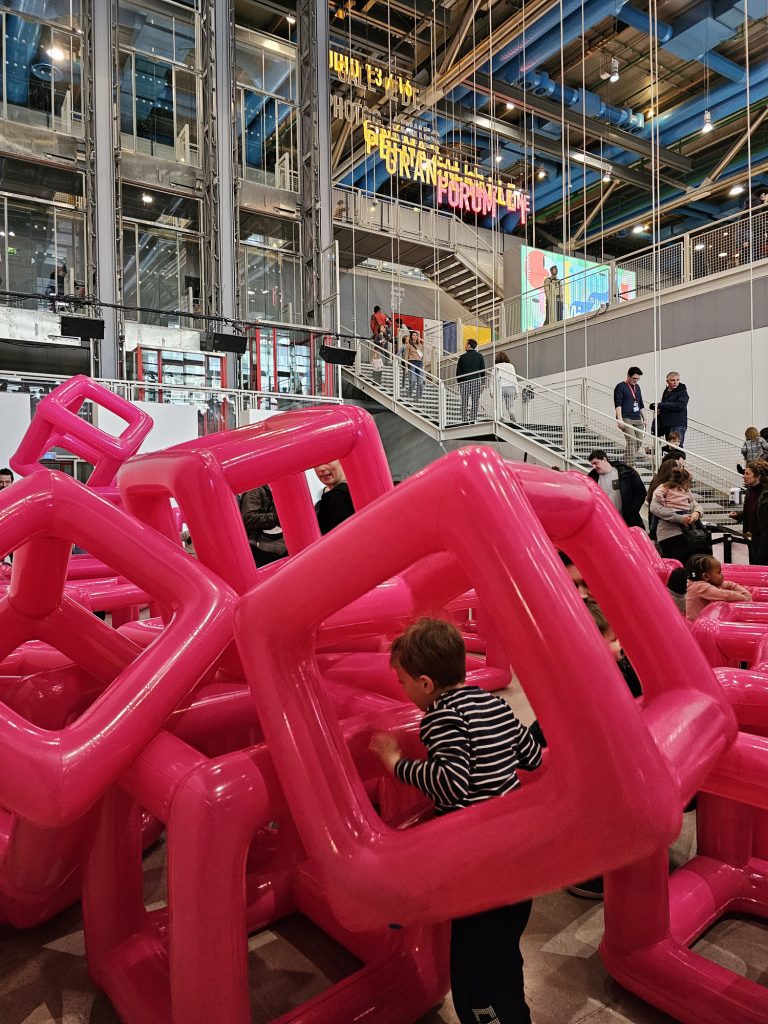
Mille lieux sous le rose at Centre Pompidou, 2024
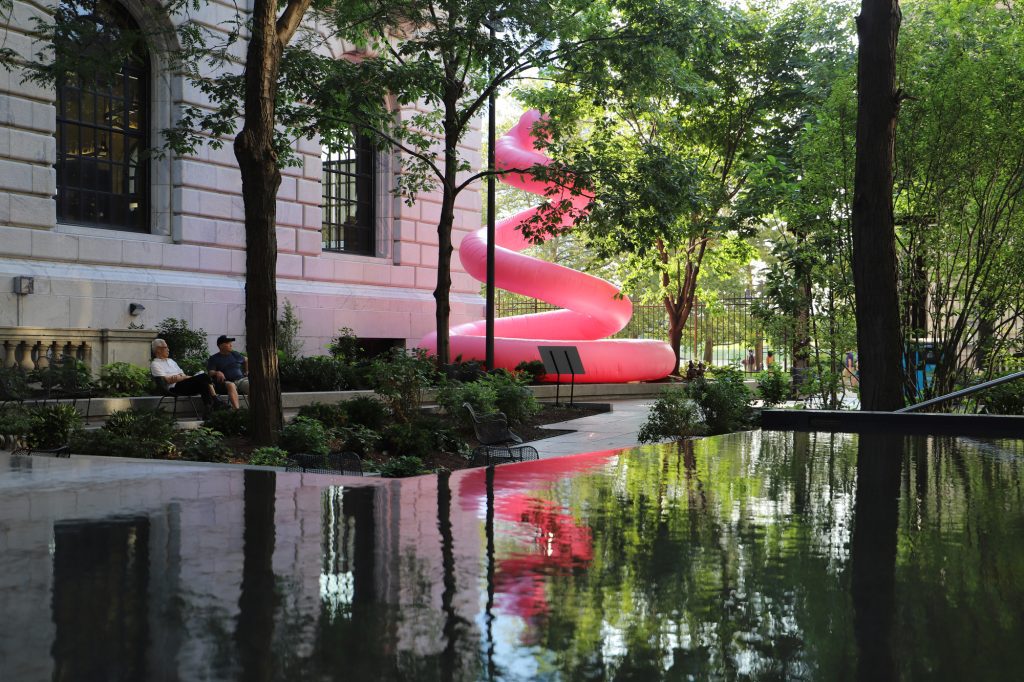
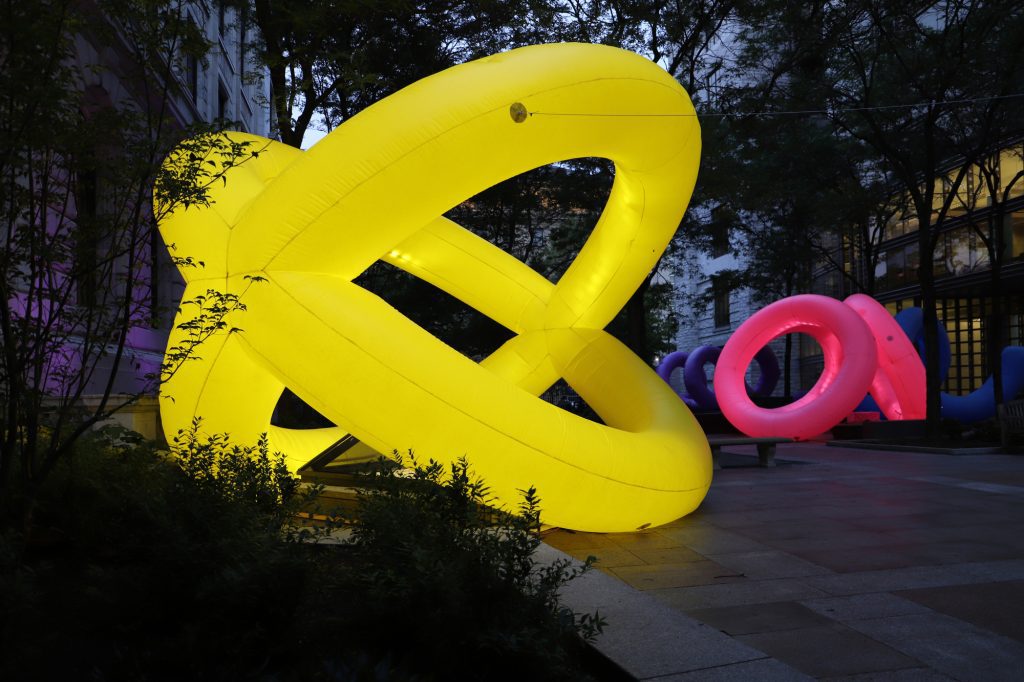
Inner Circles at Cleveland Public Library, 2019
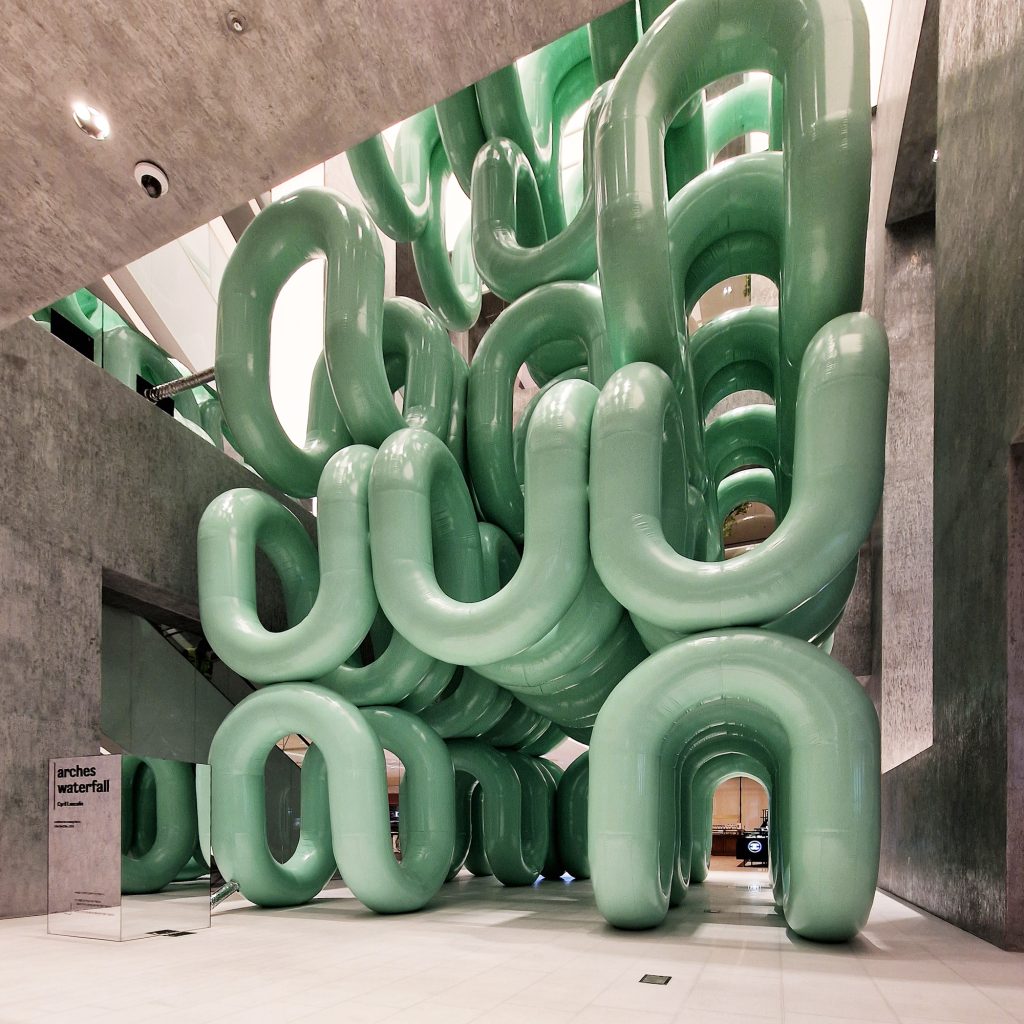
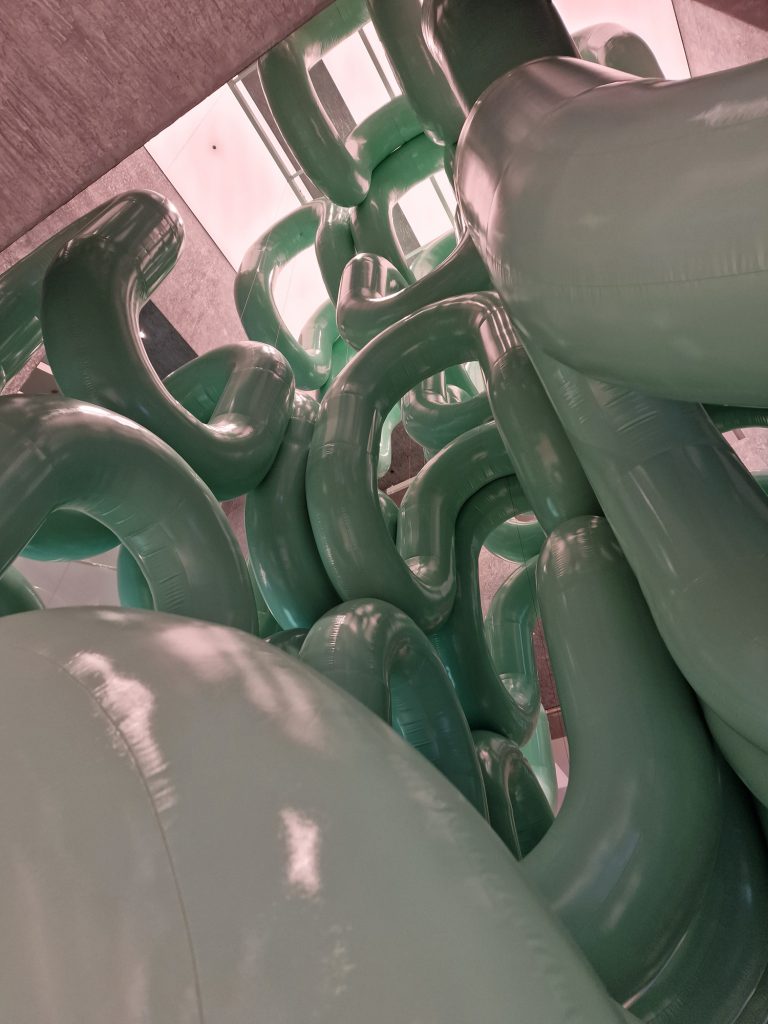
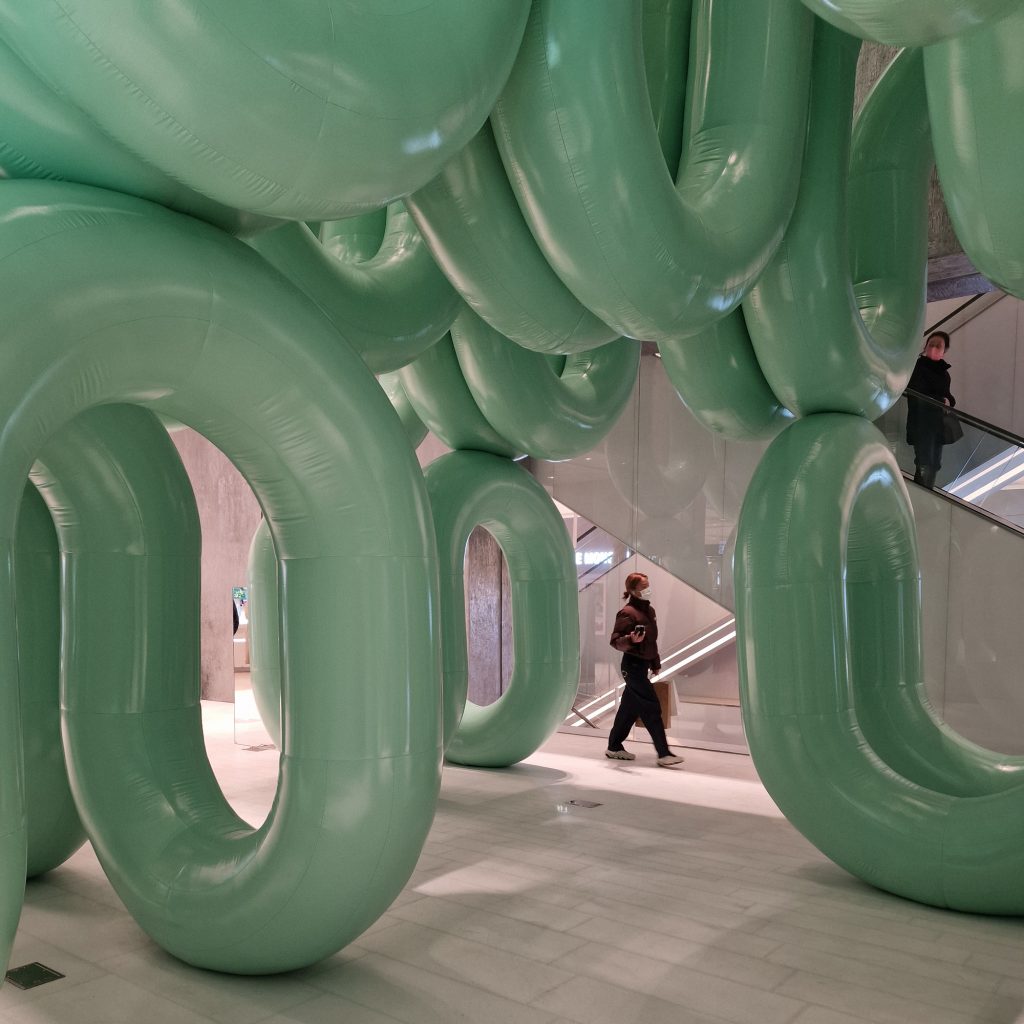
Arches Waterfall at the Hyundai Store (Daegu), 2022
h: Your installations often evoke repetitive geometries and primitive shapes. What draws you to these forms, and how do you see them resonating with modern audiences?
CL: Primitive forms and repetition create a kind of universal, almost timeless language. They are immediately understandable, but by reinterpreting them on a large scale or in unexpected contexts, they take on new meaning. Modern audiences, accustomed to constant and complex visual stimuli, seem to appreciate this return to purer, more fundamental forms. There is something reassuring in this simplicity, but at the same time, it opens the door to multiple interpretations.
h: As both an architect and an artist, how do you navigate the boundary between functional design and artistic expression? Do you feel one discipline informs the other more heavily in your work?
CL: There is always a dialogue between architecture and art in my work. Architecture involves functional and structural constraints, while art allows me to explore form and space more freely. Often, it is architectural principles – such as repetition, modularity, or use of space – that guide my artistic process. However, art allows me to escape these constraints and create more daring or conceptual forms. It is a symbiotic relationship where each discipline enriches the other. I am not drawing a shape, but I am representing an idea that could be summarised by a simple description; for example, a pyramid made of spheres with a central tunnel (Pyramid XL Sphere)!
h: You frequently explore the theme of ‘data’ in your work. How does the concept of data – both physical and virtual – inform your creative process and the experiences you build?
CL: Data, whether digital or physical, is a raw material for me. It represents raw information that I can transform into visual forms or spatial installations. For example, algorithms or data can be translated into geometric patterns or parametric structures. This allows me to create works that are both organised and organic, where the creative process reflects underlying systems that structure our world, whether visible or not.
h: Your practice blends parametric design, technology, and traditional art. What innovations in technology or design are you most excited to explore next, and how do you see them influencing your future work?
CL: I am particularly interested in advances in augmented reality and digital manufacturing. I explored this in my collaboration with Snapchat at Dubai Expo 2020, where virtual experiences enriched the physical immersive work. During my exhibition We Land at K11 Guangzhou, there were sculptures physically constructed with giant bitcoins but also digital sculptures animated on screens with drawn on Bitcoins. Regarding digital manufacturing, I make many models of my sculptures on a smaller scale, but also some very large-scale sculptures are made by 3D printing, such as my work Dragon Robots made for Royal Caribbean. These technologies allow us to push the limits of what we can physically achieve while opening doors to new immersive experiences. The possibility of creating works that exist simultaneously in the real world and in virtual spaces excites me. I think this will profoundly influence my future work, particularly in terms of interaction with the public and perception of space.
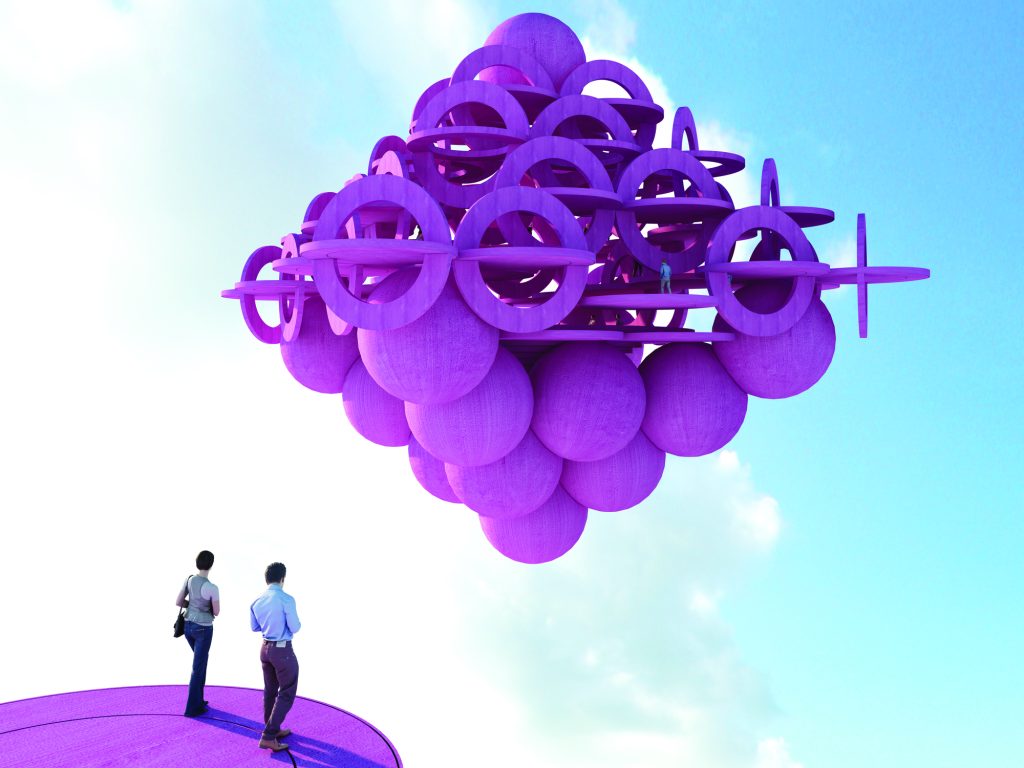
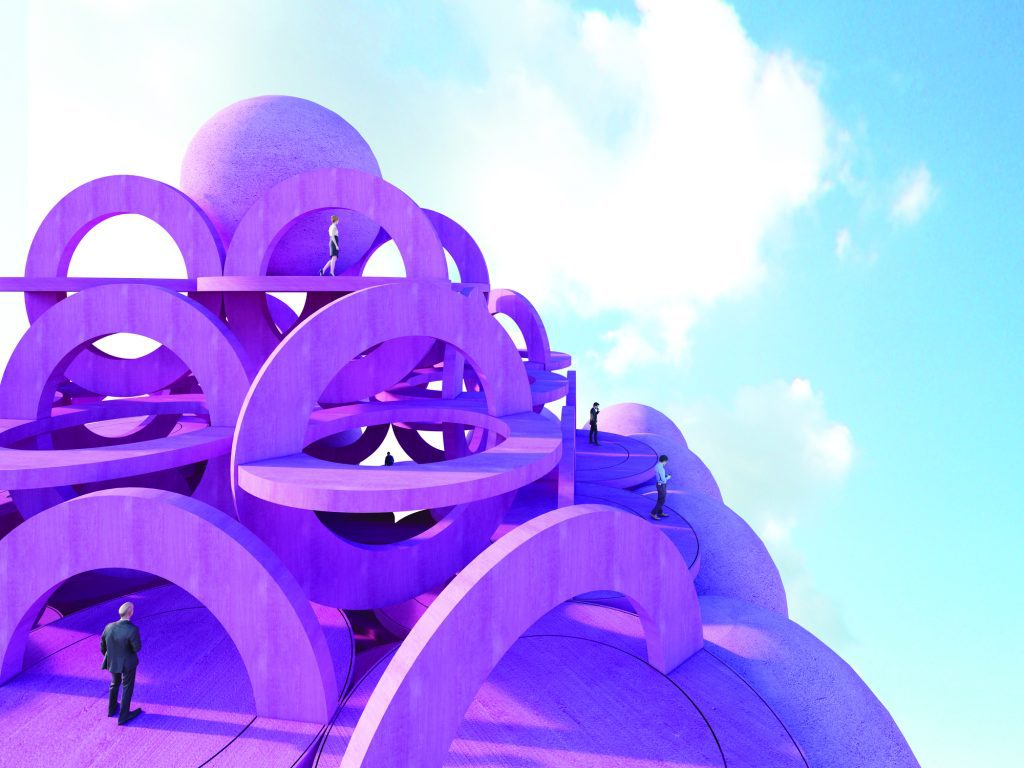
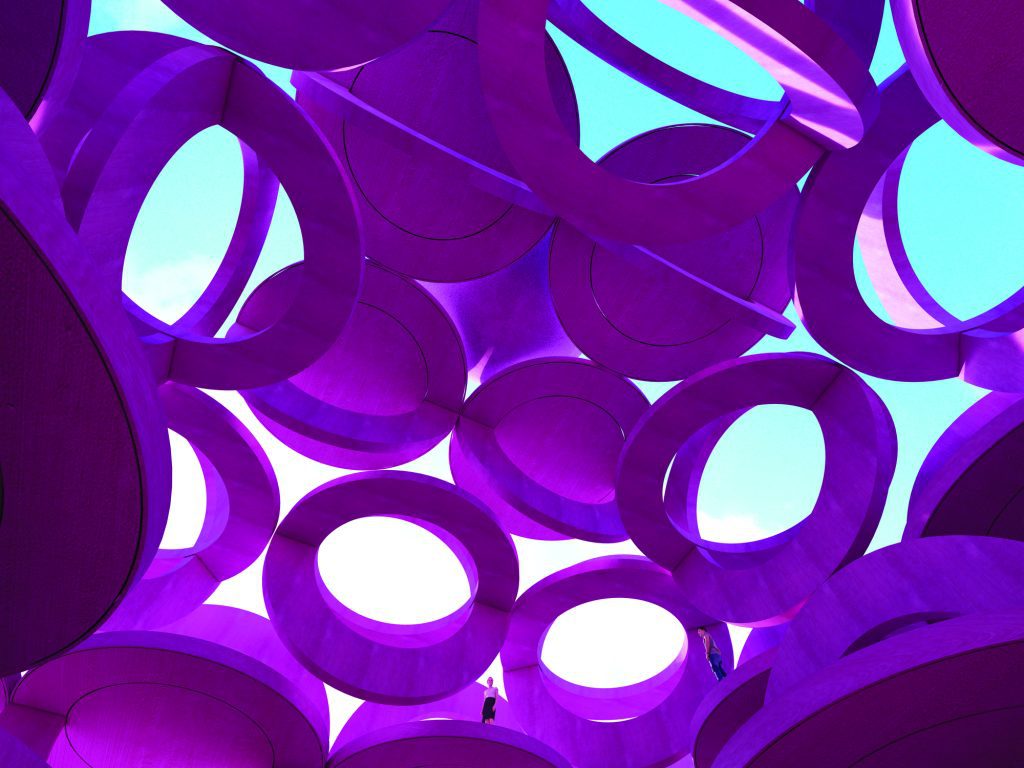
The Meeting Place, 2022
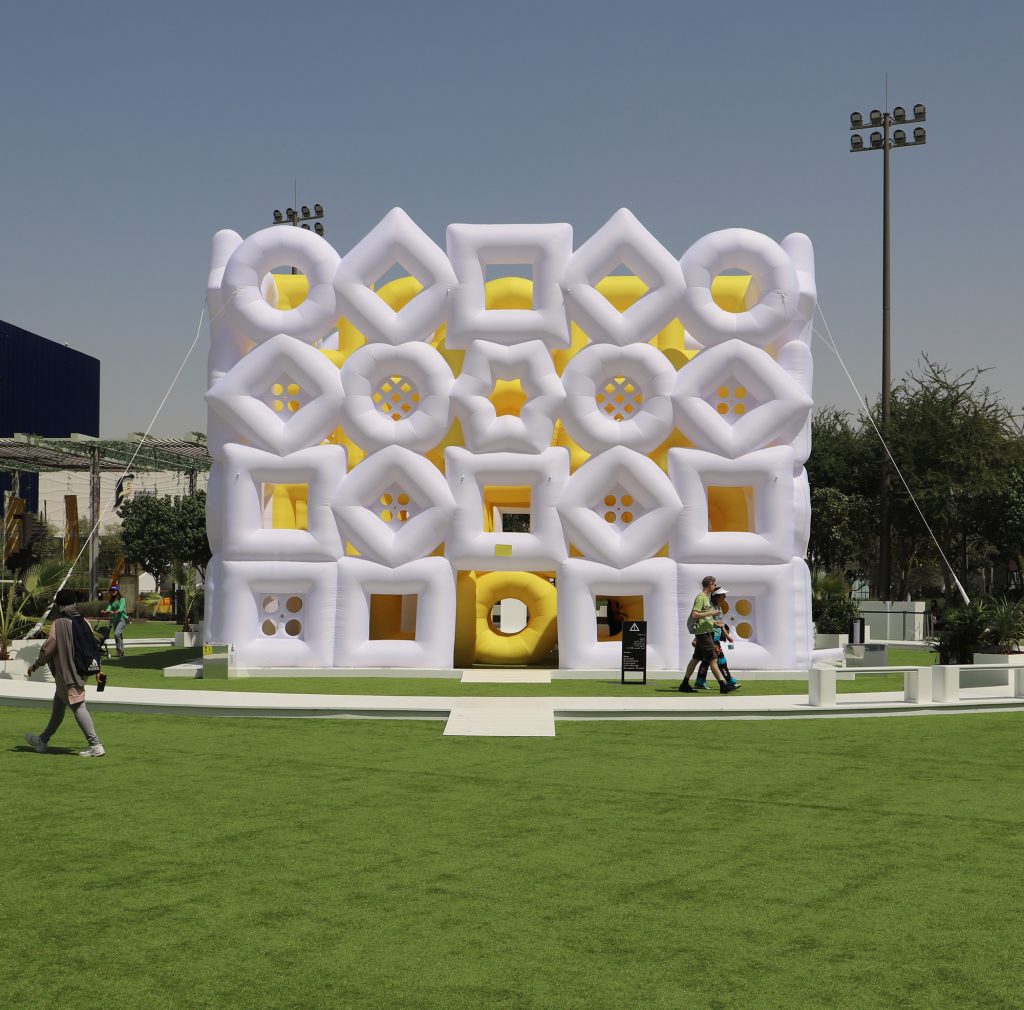
Connections Snapchat at Dubai Expo, 2020
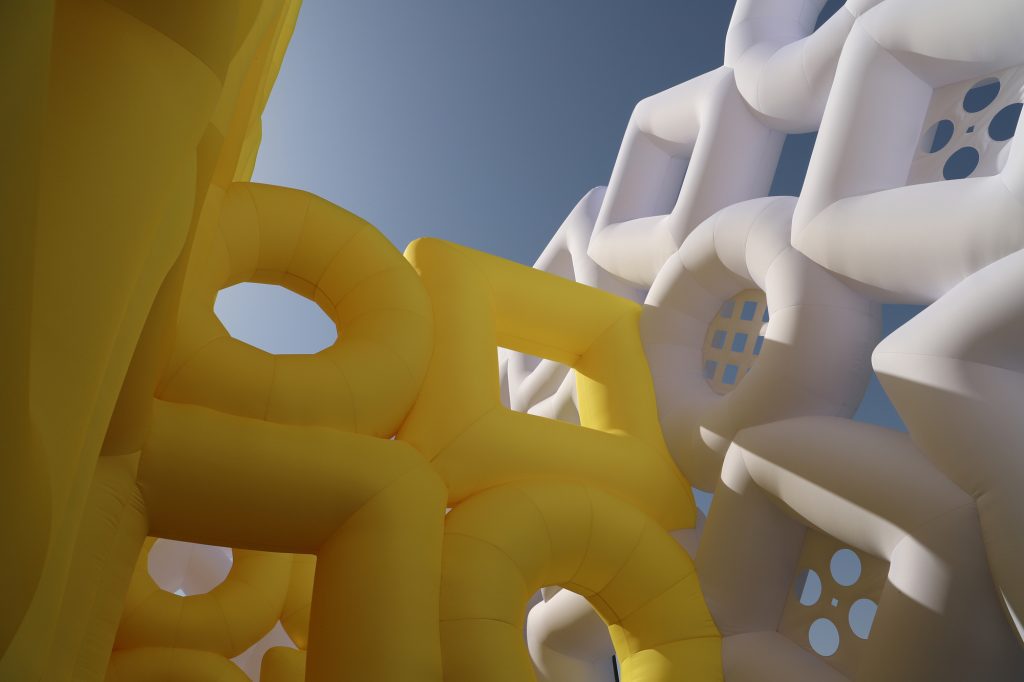
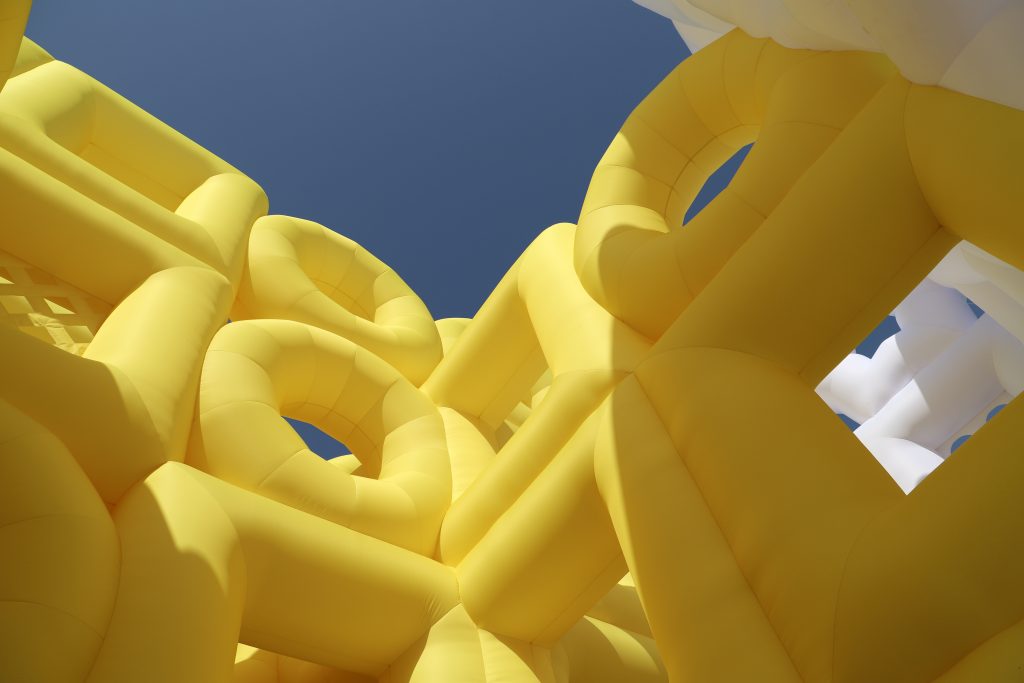
Images courtesy of the artist

